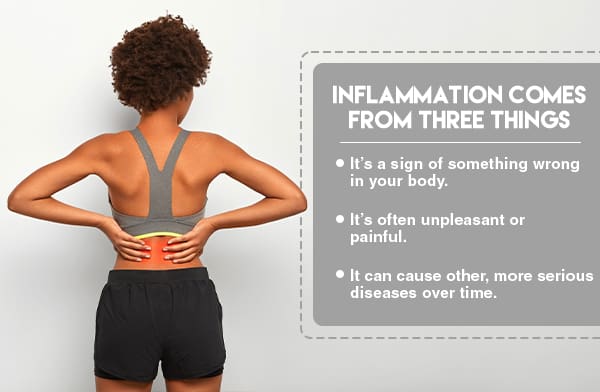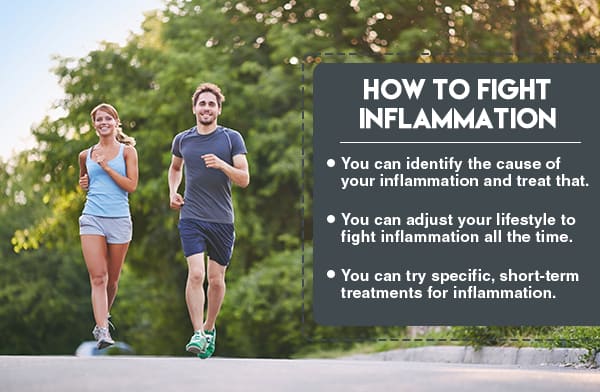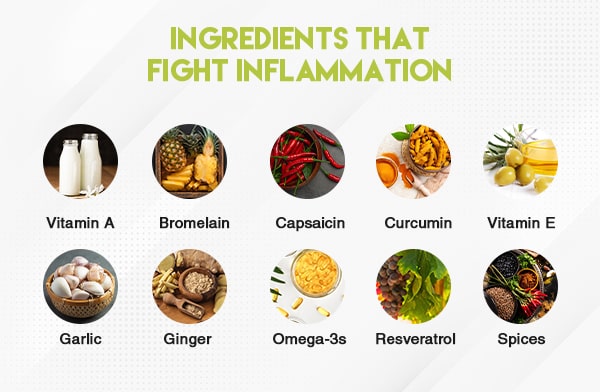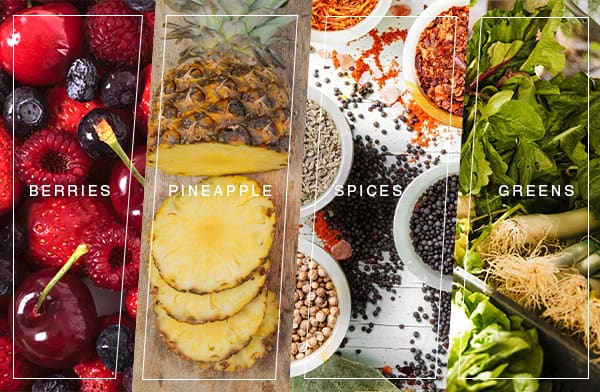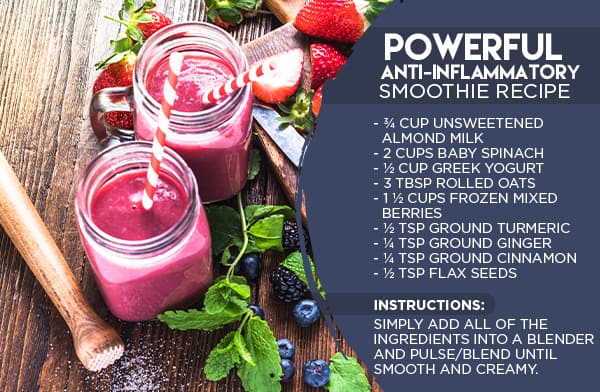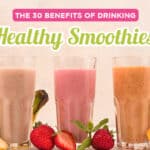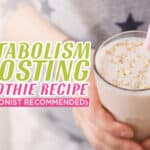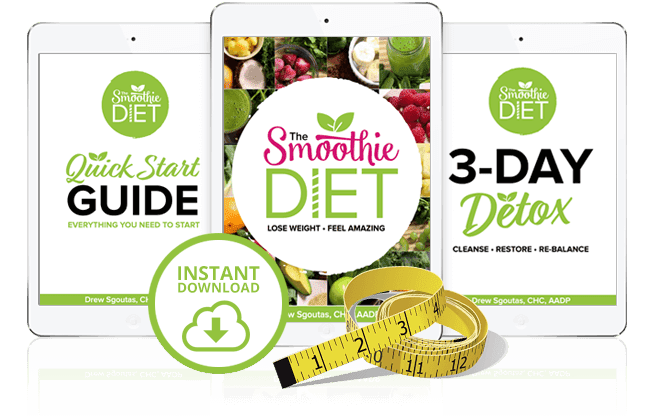How to Make an Anti-Inflammatory Smoothie (With Recipe)
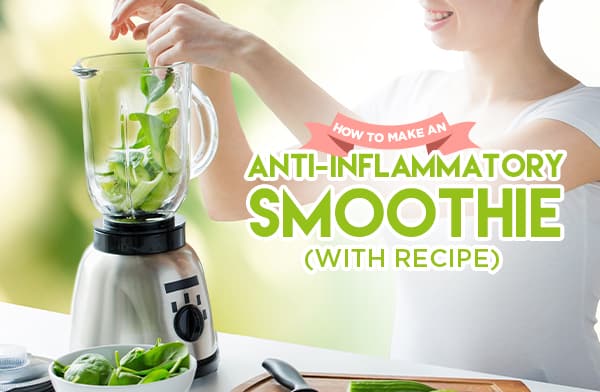
Inflammation is one of the current boogeymen of the health world. Every health nut, diet guru, and weight loss advocate mentions inflammation as something their program can treat. And with most of them (if not all), it’s true! Your diet and lifestyle play an essential role in your overall health.
Inflammation is unpleasant or even painful, and it can be bad for your body over time. It’s no wonder that it’s the main concern for millions of people. Inflammation can affect your blood flow, immune system, muscles, joints, gut health – it causes stress on the entire body.
What if I told you that you could fight it off and make small changes to help reduce your inflammation? You’d live a better life. You’d have less pain, so you’d have more energy. You’d be able to do the things you love without worrying about aching knees or throbbing knuckles getting in the way. Your immune system will be stronger, your mood will improve, and your body will be in a healthier state.
That’s why we fight inflammation. It might be a common issue, it might be natural, but that doesn’t mean we have to suffer.
So, let’s learn a bit about inflammation and how to fight it.
What is Inflammation, Anyway?
Inflammation on its own isn’t quite as bad as everyone thinks. It’s a natural part of your bodily processes, specifically your immune system. When you get sick, your immune system springs into action, sending white blood cells and other immune cells to fight the infection.
It can even happen when you’re not sick. After all, you’re pretty much constantly exposed to bacteria and viruses. Your immune system is working all the time to keep you from getting sick. Some people suffer more than others, and chronic inflammation can become a problem over time. Low-level chronic inflammation is even more dangerous, as you might not even be aware that you have it until it starts causing problems.
Inflammation can also be a sign of something else going wrong with your body. Arthritis, for example, is just the inflammation of the joints; it happens when your immune system misidentifies your joint connective tissue as a foreign invader and starts to attack it.
The trouble with inflammation comes from three things.
- It’s a sign of something wrong with your body. You don’t have inflammation in your body if you’re not fighting off some invader. If you have inflammation of the joints or other parts of your body, it can be a sign of an autoimmune disorder too. Any time you have inflammation, it’s worth treating in some way.
- It’s often unpleasant or painful. When you’re sick, you ache. You might feel tender or bruised; you might swell up; you might flush and turn red. All of these are unpleasant, and they’re all signs of inflammation.
- It can cause other, more severe diseases over time. Long-term inflammation (called chronic inflammation) has been linked to asthma, diabetes, cancer, and heart disease. It might even be a contributing factor in Alzheimer’s disease! You don’t want any of those, so treating inflammation can help keep you safe.
Inflammation serves an essential purpose as part of the immune response. The redness, the swelling, the warmth? Those are all the immune system increasing blood flow to the area and raising its temperature in an attempt to drive off and “cook” the bacteria or viruses affecting you. Unfortunately for us, it’s also painful and unpleasant.
So, how do you fight inflammation?
How to Fight Inflammation
As with pretty much anything in life, you can approach a problem from a few different angles.
With inflammation, you have three options.
- You can identify the cause of your inflammation and treat that.
- You can adjust your lifestyle to fight inflammation all the time.
- You can try specific, short-term treatments for inflammation.
So, let’s look at each one of those and see where smoothies come in.
First, let’s talk about the causes of inflammation. There are basically four different causes.
- Autoimmune disease.
- Exposure to unhealthy chemicals.
- Exposure to diseases.
- Unhealthy diet.
1. Autoimmune diseases are the rarest of the four causes but still affect millions of people every year. Conditions like rheumatoid arthritis are cases where your immune system is going wild attacking something it shouldn’t. You can’t always treat this with a change in diet, but you can help fight off the effects of inflammation to reduce pain and severity. I highly recommend talking to a doctor and seeing if there’s a program available to help with these symptoms. Autoimmune diseases are not to be taken lightly. Luckily, the majority of the folks reading this aren’t suffering from autoimmune disease; you probably have one or more of the other causes.
2. Unhealthy chemicals cause inflammation because they damage the body. The two most common are smoke and alcohol. Tobacco smoke contains hundreds of nasty chemicals, many of which damage the body and trigger inflammation. Alcohol is technically poison! Sure, a small amount of red wine might be healthy in moderation, but if far too many people drink far too much, far too often. It damages your liver, it messes with your blood, and it’s generally unhealthy.
This is why one of the best things you can do for your health is dramatically limit your alcohol consumption and quit smoking. Both of these have extreme effects on your health.
3. Exposure to disease is another cause of inflammation, and it’s another area where small lifestyle changes may not help as much. Some people are just more exposed, depending on their lifestyle. A teacher has to deal with children, a daycare worker is in constant contact with various diseases, and a retail worker has to cope with customers’ coughs.
What smoothies can do is help give your body the fuel to fight off the diseases it encounters. The people who eat healthily tend to get sick less often, right? When you give your body healthy fuel, vitamins, and minerals, it can more effectively fight diseases before they reach a point where inflammation is necessary.
4. An unhealthy diet follows naturally. Do you know what can cause inflammation? High-fructose corn syrup. Trans fats. Vegetable oils – especially processed oils. Refined carbs can cause inflammation, as it has its fiber removed during the refinement process. Even heavily processed meats like bacon, sausage, and some jerky can all cause inflammation.
This is where smoothies can do the most good. Nearly everything dietary that causes inflammation comes from junk food, processed foods, preservatives, and other garbage additives in our food. When you eat healthier options, you have a lot less of all of those things.
You might notice that just about everything on that list is heavily present in snacks. Well, if you replace your snacks with smoothies, you cut out a considerable portion of the inflammation-causing ingredients you would otherwise be eating.
All of that is addressing the causes of inflammation. Exercise, a healthier diet, and cutting back on habits like smoking and drinking all reduce inflammation. There are still two other ways to fight inflammation, though: acute treatments and lifestyle changes.
- Lifestyle changes tie into what we’ve already talked about; quitting smoking, cutting back on your drinking, and adjusting your diet to eat healthier foods are great examples of healthy lifestyle changes. You can also exercise more, visit a doctor regularly, and get more sunlight.
- Acute treatments can also work. “Acute” means temporary, as opposed to chronic; an acute treatment is something like taking ibuprofen, an anti-inflammatory. You shouldn’t take something like that every day since it can damage the kidneys and liver, but you can take them for a few days or weeks if you get sick.
You can also eat foods that fight inflammation. Welcome back, smoothies! It’s not only possible but encouraged to include anti-inflammatory ingredients in your food, including your smoothies. In fact, smoothies can be a great way to get more anti-inflammatory foods that you wouldn’t otherwise be able to work in.
The only question is, what ingredients should you include?
Ingredients That Fight Inflammation
Now let’s break down the kinds of foods you can eat to fight inflammation.
As you might be able to guess, most of these are common healthy foods.
- Vitamin A. Vitamin A is an immune booster and helps fight inflammation. You can get it in foods like liver, milk, fish oil, eggs, and greens.
- Bromelain. This enzyme comes from pineapple and is frequently used to treat minor inflammation after surgeries.
- Capsaicin. The chemical that makes hot peppers spicy, a little capsaicin, can help your body fight inflammation. You don’t need to chow down on a Carolina Reaper, though; a little cayenne is enough.
- Curcumin. The chemical that makes turmeric yellow, curcumin powder (not to be confused with cumin powder), may have anti-inflammatory benefits.
- Vitamin E. Another great vitamin, vitamin E, is packed with antioxidants. Oxidative stress causes inflammation, so getting rid of it can help a ton. Vitamin E can be found in olive oil, almonds, leafy greens, and dairy.
- Garlic. What can’t this little clove do? Garlic is a superfood, and it’s super tasty. Unfortunately, it doesn’t go well in smoothies.
- Ginger. Studies have shown that ginger is almost as good as ibuprofen as an anti-inflammatory. Plus, you can mix it into smoothies! Best of all, they don’t have any of the side effects of other treatments.
- Omega-3s. Omega-3 fatty acids are hugely beneficial for dietary health. They’re most commonly found in fatty fish like tuna and salmon (or in fish oil extracts) and come from kale, nuts, eggs, and flax.
- Resveratrol. While this sounds like a chemical or medication name, it’s actually a natural plant compound that many plants use to fight off infections. It works in humans too! You can get it from berries, especially blueberries and cranberries, as well as pistachios and peanuts.
- Spices. Certain spices have already been mentioned, like ginger, turmeric, and capsaicin. Some others can be great for inflammation, too, like cinnamon, black pepper, and clove.
So, what do we get out of this? There are quite a few foods that can help fight inflammation, though many of them don’t taste all that great in smoothies. If you want to go with a Mediterranean diet, for example, by all means, go for it! Fish and vegetables are delicious.
If you’re looking for smoothies, though, here are some of the foods you’ll want to look into.
- Berries. Berries are packed with antioxidants, anti-inflammatories, vitamins, minerals, and all things good for you. They’re also delicious and can make a strong base for a smoothie.
- Pineapple. Pineapple has some potent enzymes that help with inflammation, plus it’s a delicious addition to smoothies.
- Spices. Turmeric, ginger, cinnamon, and clove can all be good additions to smoothies. They work best in earthy, rich smoothies that rely on nut butter, chocolate, and berries for a deep, delicious, and healthy treat.
- Greens. Leafy greens like spinach, kale, and collards are all packed with nutrients. If you want to go for a green smoothie, they’ll be the base and will get you most of the way to an excellent anti-inflammatory smoothie on their own.
Knowing all of this, we can put together a great smoothie. So, here’s our recipe!
Powerful Anti-Inflammatory Smoothie Recipe
Ingredients:
- ¾ Cup Unsweetened Almond Milk
- 2 Cups Baby Spinach
- ½ Cup Greek Yogurt
- 3 Tbsp Rolled Oats
- 1 ½ Cups Frozen Mixed Berries
- ½ Tsp Ground Turmeric
- ¼ Tsp Ground Ginger
- ¼ Tsp Ground Cinnamon
- ½ Tsp Flax Seeds
Instructions:
Add all of the ingredients into a blender and pulse/blend until smooth and creamy.
Notes:
This recipe is somewhat basic yet flexible. Almond milk is a great base, but you can use other milk alternatives. Greek yogurt is a good source of probiotics, but if you want, you can swap it out for a frozen banana, something to give the smoothie body and creaminess without too much overt flavor.
The oats are there for three reasons. They add substance to the smoothie, which reduces appetite and keeps you feeling full. They’re full of fiber, which is healthy for your gut. They also have some nutrients which help fight off infections.
You can also add a sweetener if you like. Avoid sugar, of course. Instead, try a teaspoon of honey, a small amount of maple syrup (the good stuff!), or agave nectar. You don’t want to add too much of these; a little goes a long way.
Finally, you can add in a pinch of cayenne or red pepper if you don’t mind a hint of spice. The capsaicin is excellent for fighting inflammation, but not everyone enjoys it, so we left it out of the base recipe.
Like my smoothie recipes? If so, you’ll love the Smoothie Diet, a robust and healthy weight loss and health-boosting plan for replacing meals with smoothies. Give it a look if you’re interested in the 21-day smoothie challenge!

